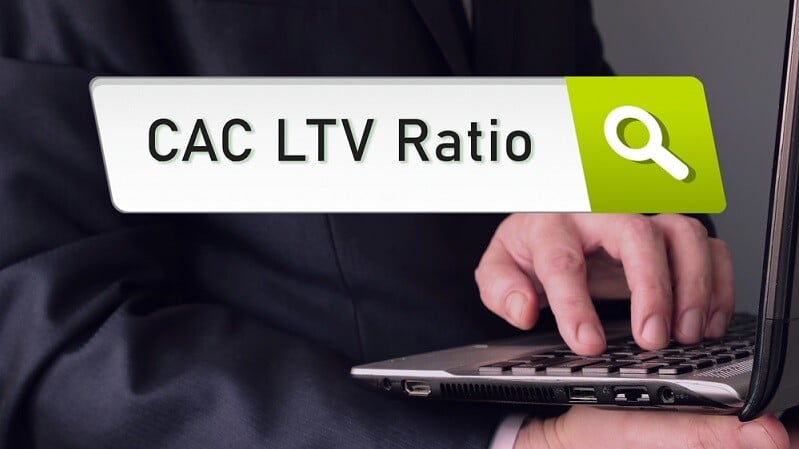This article was updated on February 3, 2023
As a proud owner of a local small business, you know just how many important matters there are to oversee. Few, however, will be as crucial for the continued survival of your company as ensuring that your taxes are filed on time and properly.
To help you navigate the latter and avoid the common ploys and pitfalls, we’ve put together this survival guide on how to file small business taxes.
What’s new for this year’s tax season
Part of what makes learning how to do taxes for a small business challenging is that the requirements change every year—even if the changes are minor. Between new laws coming into effect and policy updates, the American tax system is always in flux. And the upcoming tax year is no exception.
Thankfully, there have been no major changes for small business owners this year. However, there are a few notable revisions and events to be aware of, including:
- Changes to form 1099-K — If your business receives payments via third-party networks, you might see a new form this year: The 1099-K. Form 1099-K covers payments from platforms like PayPal, Venmo, Etsy, and more. While the 1099-K is nothing new, the threshold has changed. Previously, only businesses that received more than $20,000 across 200 transactions had to fill out the form. Now, the number of transactions is irrelevant, and the amount that triggers the form is only $600.
- Deferred Social Security tax repayment — If your business took advantage of the CARES Act in 2020 and deferred depositing and paying your employees’ share of Social Security taxes, the deadline for repayment is coming up. According to the IRS, 50% of that deferral should have already been paid on January 3, 2022; the remaining 50% is due by January 3, 2023. Payments can be made by credit card, debit card, money order, check, or through the Electronic Federal Tax Payment System.
If these changes don’t apply to you, you’re in luck—doing your business taxes this year should be similar to last year. The rest of this guide can help you through that process.
Different types of taxes for which you’re responsible
Depending on your business, there are several types of federal income taxes that your business may be required to pay to the IRS. Typically, there are six main business taxes you should be aware of:
- Income tax – Citizens have to pay taxes on their wages, investments, and property sales gains. Similarly, corporations have to pay taxes on net income after subtracting business expenses. In addition, if you live in a state with income taxes, those must be accounted for as well.
- Property tax – Business owners will be expected to pay city or county taxes on office space or commercial property.
- Self-employment tax – If you’re self-employed, you’ll be required to pay both Social Security and Medicare if you’re making more than $400 per year.
- Excise tax – Certain types of services, goods, or industries are mandated to pay an excise tax. For example, restaurants and bars must pay an excise tax on alcohol.
- Employment tax – If you have multiple employees, you will need to pay a payroll tax on wages, which includes Social Security, Medicare, federal and state unemployment, and federal income tax withholding. If you hired an independent contractor, you would shoulder their employment tax, too. Wondering how to file taxes as an independent contractor? If you are just getting started, there are plenty of small business payroll software options to choose from.
- Sales tax – Because sales taxes vary on a state-by-state basis, looking up the rules of the specific state you operate in is essential.
Actionable steps for filing taxes
As you prepare for tax day, these helpful steps can put you on the right track:
Step 1: Collect your records
When it comes to the question of how to do taxes for small businesses, your first task is collecting all of your records. This step is especially important if you’re attempting to utilize the various small business tax breaks available to you. Papers you’ll need include:
- Your business earnings
- Your expenses
- Receipts for any possible write-offs
If you’re filing taxes on your own, you should be using accounting programs such as QuickBooks or Quicken, or tax preparation software like TurboTax or H&R Block. These can help you stay on top of your sales and expenditures throughout the year, making it much easier to fill out your tax return.
Step 2: Track down the right form
To file your taxes, you need to select the correct IRS form. Finding the proper one will depend upon your business structure, which you determined while writing your business plan. For tax purposes, these break down as follows:
- C-Corps – If you’re a small business owner, you’ll need to pay a self-employment tax and a flat tax rate of 21%. When the C-corporation pays dividends, you may have to pay taxes on those with your personal income tax return. There are two types of dividends:
- Qualified – If the stock has been owned for more than 60 days, it gets taxed at long-term capital gain rates.
- Unqualified – Ordinary dividends are taxed at your income tax rate.
As a C-Corp, you’ll need to fill out Form 1120.
- Pass-through entities — Pass-through entities pay a tax rate that’s the same as their personal income tax rate, which, according to the IRS, is as follows:
|
37% for incomes over $539,900 |
$647,850 for married couples filing jointly |
|
35% for incomes over $215,950 |
$431,900 for married couples filing jointly |
|
32% for incomes over $170,050 |
$340,100 for married couples filing jointly |
|
24% for incomes over $89,075 |
$178,150 for married couples filing jointly |
|
22% for incomes over $41,775 |
$83,550 for married couples filing jointly |
|
12% for incomes over $10,275 |
$20,550 for married couples filing jointly |
These pass-through entities include:
- Sole Proprietorship – Sole proprietors must report their income and losses alongside their personal income tax, but the two must be kept separate. A sole proprietor is required to submit a 1040 Form and must pay an estimated self-employment tax every quarter.
- LLCs — Limited liability corporations must file a Schedule C form as well as a Schedule SE form.
- Partnerships — Partnerships with two or more employees need to pay personal income taxes and self-employment taxes. They must submit their estimated income tax alongside a 1065 form.
- S-Corps — S-corporations don’t pay income tax, but their revenue and business losses are deducted from shareholders' tax submissions, which is included on their 1120-S form.
Step 3: Fill out each form to the best of your ability
Once you’ve determined the type of tax form (or forms) your business structure requires, you’ll have to provide relevant tax information. That said, be careful when you do. Businesses often make mistakes when completing their business tax forms, which can lead to a host of other problems.
Common business tax errors include:
- Underpaying estimated taxes – If you are self-employed, you’re required to pay quarterly estimated taxes on your business income as well as self-employment tax. Underpayment can result in penalties.
- Simple mistakes – There are common errors people accidentally make while doing their taxes. Some of these errors include:
- Misspelled name
- Math errors
- Not signing and dating the return
- Missing name or address
- Illegible name or address
- Lack of parentheses around negative amounts
- Not including relevant schedules
- Not making the check payable to the US Treasury
- Forgetting to add a postage stamp on the envelope
- Invalid or missing taxpayer ID numbers – The number must be filled out in the right spot and be the correct number for your business type.
- Failure to report all your business income – If your business receives a 1099-MISC form for received business payments, you’ll be required to report your income on your business tax returns so the IRS can compare 1099s submitted by both payers and payees.
Step 4: Don’t forget about your small business tax breaks
There are dozens of potential small business tax write-offs to add to your tax form. As a business owner, these deductions can be on your overall taxes owed. Examples include:
- Vehicle expenses — You can either keep track of gasoline, maintenance, parking, and toll fees used for business or simply apply the IRS mileage rate of 58.5¢ per mile.
- Home office – If you work from home, your home functions as your office. This figure depends upon the amount of your home that’s used for office space, which is calculated by dividing the total square footage of the home by the square footage used as an office.
- Professional services – If you hire a lawyer, accountant, or other professional, the fees and expenses you pay for those services are deductible.
- Office supplies and expenses – Conventional business supplies and office expenses can be deducted if you use them during the year they were purchased.
- Rent on your commercial location – If you’re paying rent for office space, it can be deducted.
Tips and tricks for filing small business taxes
Did you get all that? It’s a lot to take in.
Although all that information can make filing business taxes seem overwhelming, it doesn’t have to be. Here are some best practices for doing your taxes.
Start early
Even though small business taxes aren’t due until April 18, 2023 (or March 15, 2023, for most partnerships and S-corporations), procrastinating never pays off.
Hopefully, you’ve been preparing for tax season throughout 2022 by collecting documents and entering information in your tax software of choice. If you haven’t, don’t start stressing yet—there’s still plenty of time to make the deadline. But the trick is to start today.
Open a separate tax account for your business
If you’re the owner of a new startup or a side hustle that makes minimal income, you may lump your business taxes in with your personal ones. However, if you have a business—no matter how small it may be—it’s worth setting up a separate tax account.
If nothing else, having a separate account prepares you for a future in which you are earning enough to be taxed. It will also help you separate your personal expenses and income from your business.
Submit your taxes—no matter what
If you’ve had a rough year, collecting your records and tax documents may paint a less-than-pretty picture. You might owe the government more than you’d like. As tempting as it may be to not file your taxes and wish it all away, the consequences of not filing are worse.
So, even if you can’t pay the full amount, you should file your small business taxes on time. If you need more time, you can always file Form 7004 to extend your deadline to October 15, 2023. However, you’ll still need to estimate and pay your taxes by the original due date.
Find a professional accountant on Nextdoor
Although many business owners handle taxes themselves, the process is often time-consuming and frustrating—not to mention stressful. After all, a mistake on your small business taxes can potentially lead to late penalties or federal levies.
While the IRS’ (Internal Revenue Service) Small Business and Self-Employed Tax Center is an invaluable resource, it can feel unapproachable at times. Because of this, it may be wise to hire a tax professional to help ensure everything is filled out correctly. A professional can even help you find avenues of tax savings that you might not otherwise know about.
But how do you find a trustworthy accountant near you? You turn to Nextdoor.
Nextdoor gives you access to an ever-growing network of your neighbors. If you’re a business owner looking for tax preparation services in your area, you can use Nextdoor to find them within your community. Try sharing a Business Post to collect recommendations for nearby tax professionals who can help your business.
Ready to make your first Business Post? Claim your free Business Page today and start connecting with your neighbors.








